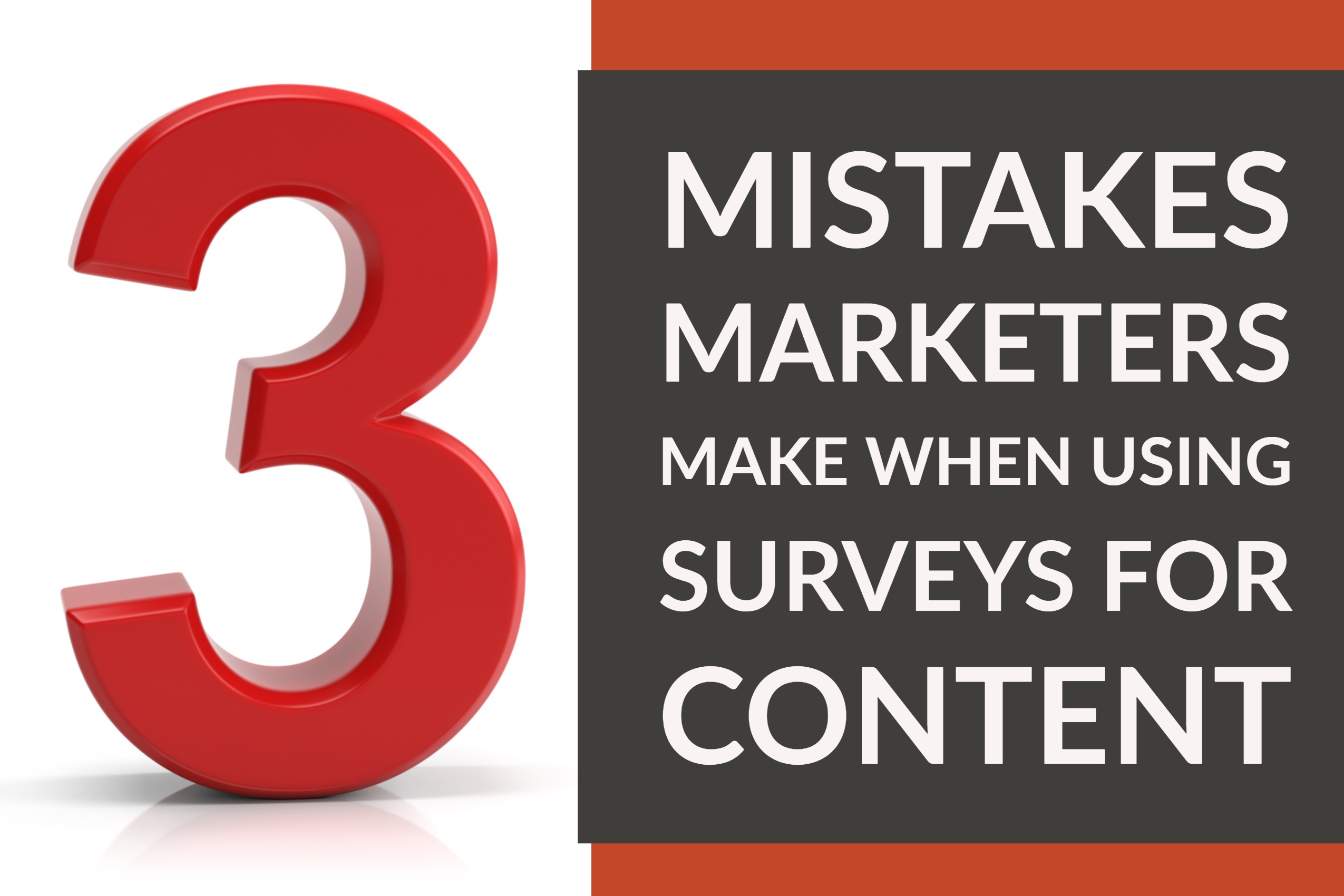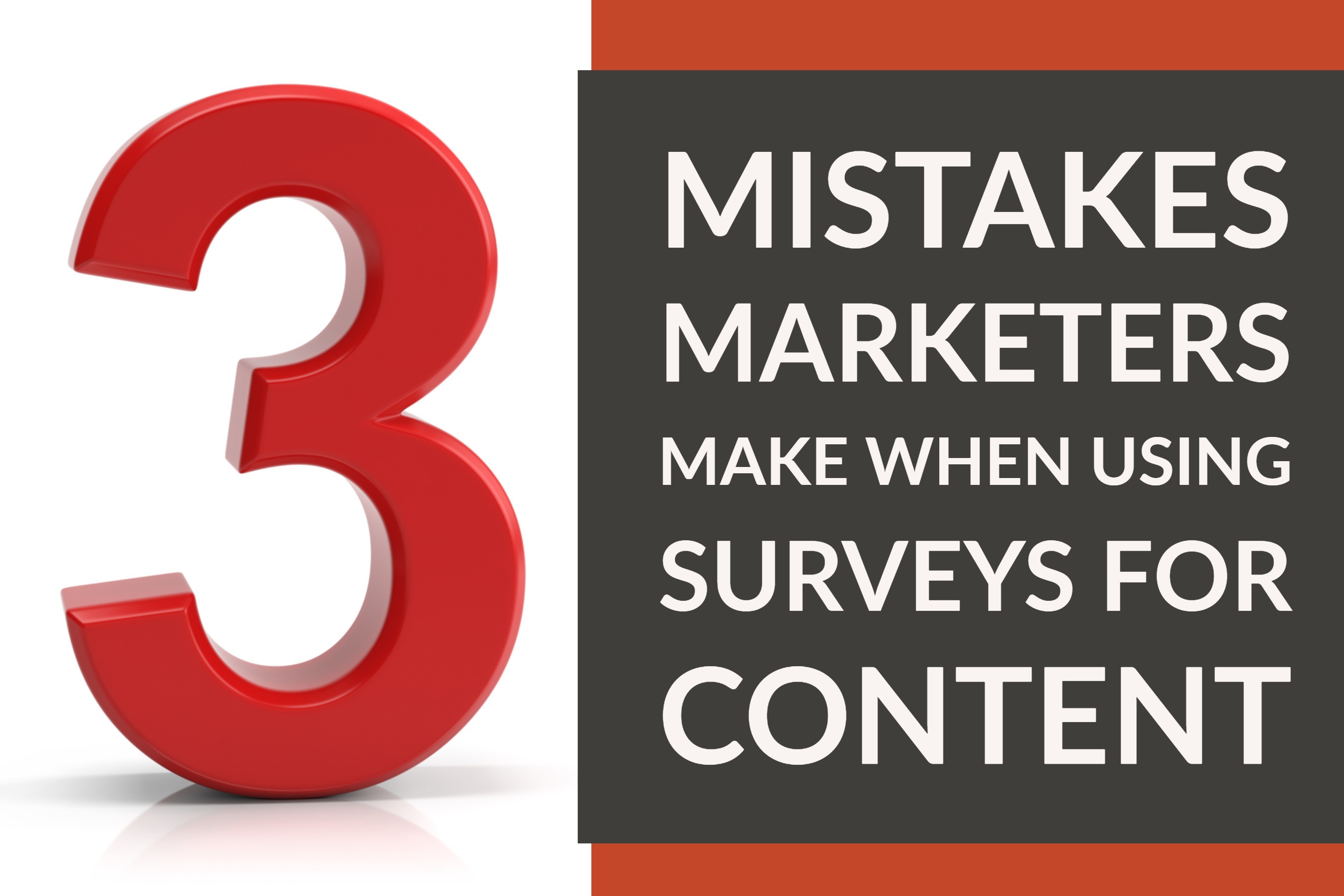3 Mistakes Marketers Make When Using Surveys For Content

Surveys and original research bring marketing and public relations teams a wealth of information to use in powering content development, when they are executed correctly with the end result in mind.
But surveys can also be a valuable source of data to be mined for content creation to be used to drive inbound marketing and thought leadership. B2B buyers have expressed their desire for credible, educational content. More than 40 percent told the Content Marketing Institute they want content that is more educational than promotional, and that they will consider content from any source, including vendors, as long as it is credible. (See more here.)
Original research, including surveys, can provide that credible, educational content.
But surveys require a significant investment of time and resources, so don’t let these three mistakes keep you from maximizing the return on your survey data.
Mistake #1: Not starting with a story (or stories) in mind.
If you know your intention for the survey is to provide data for content development, it just makes sense to start by thinking about the stories you want that content to tell. Review your inbound marketing campaign plans for the coming year(s) and identify the topics that could supported by market research.
From broad topics, consider the stories involved — problems to solve, conflicts and challenges to overcome, and characters for readers to cheer on. These are the keys to quality content.
Use the stories you want to tell to guide you as you write questions for the survey. In that way, you know the answers will be useful, rather than simply a random collection of data with no direction or purpose. This step and clear communication amongst everyone involved are especially important if your survey is being written and executed by an outside firm. Everyone needs to understand the stories you want to tell. (Find more in this blog post: The First Step To Writing Surveys That Generate Data You Can Use.)
Mistake #2: Not finding all of the potential stories in the data.
While the stories you want to tell drive how your survey is written, the content created from the survey is driven by the data — including when the story is different from what you originally expected.
You can’t tell a story without real information to back it up, or create content from something that’s not there, but you can ask questions that may validate your suspicions.
But don’t stop with just the stories you set out to tell. Chances are good there are many more stories to be found in your survey data if you take the time to look. Don’t accept a simple summary of the highlights if you work with a research firm.
Review the data line by line yourself so you won’t leave useful stories on the cutting room floor — every question has a story to tell.
The ability to read and analyze data is one of the most-often overlooked skills a marketer (or marketing agency) needs to have to make sense of the numbers involved, whether survey data or measurement and metrics of your marketing tactics. (This infographic covers other skills you need from your in-house marketing team and any partner agencies.)
Mistake #3: Not maximizing the survey with content creation.
Once you’ve taken the time to identify all of the stories your survey data can tell, don’t fall into the trap of creating a single master report, a single press release to promote, and one or two social media posts, then moving on to the next project.
Instead, create a content creation plan that uses those stories in a wide range of marketing and public relations content that reaches all of your customer personas and every stage of the sales funnel, from awareness material such as contributed articles in industry media all the way to the sales proposal.
Start by writing an abstract for each of the stories you have identified, and work from there. (More about using a marketing abstract to guide content creation can be found in this blog post.)
By thinking about different ways of presenting the same stories — in blog posts and as downloadable reports, visually as graphics, in video format and more — with less or more detail and supporting context, you can turn a single survey into as many as 100 different pieces of marketing content, plus the social media posts used to promote that content.
Download Maximizing Market Surveys to see how. And never let a good data point go to waste again.
-1.png?width=1652&height=294&name=Jones(RGB)-1.png)










.jpg?width=352&name=Using%20Surveys%20For%20Marketing_%20Roadmap%20To%20Success%20(infographic).jpg)

